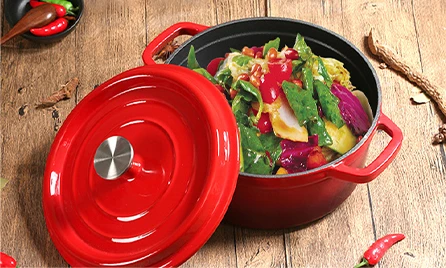
How to Care for Your Cast Iron Skillet for Longevity and Performance
The Versatility of Cast Iron Skillet Pans
Cast iron skillet pans, a timeless kitchen staple, have earned their place in culinary history for a multitude of reasons. From their durability to their versatility, these heavy-duty cookware pieces have captivated both professional chefs and home cooks alike. In this article, we will delve into the reasons why cast iron skillets have maintained their popularity and how they can transform your cooking experience.
A Brief History
The cast iron skillet has a rich history that dates back to the early 18th century. Originally developed in China, the technology of using cast iron for cookware spread throughout Europe and eventually made its way to America. Early American settlers quickly adopted cast iron skillets for their ability to withstand high heat and retain it, making them perfect for the open flame cooking typical of that time. Today, these skillets are manufactured in various designs, sizes, and finishes, with many brands boasting heirloom quality that can last for generations.
Benefits of Cast Iron Skillets
1. Heat Retention and Distribution One of the standout features of cast iron skillets is their exceptional heat retention and distribution. Once heated, cast iron holds onto that heat incredibly well, allowing for even cooking. Whether you're searing a steak or frying eggs, a cast iron skillet ensures consistent temperature throughout the cooking surface. This quality is valuable for various cooking techniques, from frying to baking and even roasting.
2. Non-Stick Properties When seasoned properly, a cast iron skillet develops a natural non-stick surface. This is achieved by applying a layer of oil to the pan and heating it until the oil bonds to the iron, creating a slick cooking surface. Over time, with regular use and proper maintenance, the non-stick layer improves. This makes cast iron skillets perfect for cooking delicate items like pancakes and fried fish, while also reducing the need for excessive oils and fats.
cast iron skillet pan

3. Versatility Cast iron skillets are incredibly versatile and can be used for a wide range of cooking methods. You can start a dish on the stovetop and transfer it straight to the oven, making it ideal for recipes that require browning and then baking. From cornbreads to frittatas and stews, the possibilities are endless. Moreover, they can be used on various heat sources, including induction, gas, and even over an open fire, making them a favorite for camping and outdoor cooking.
4. Health Benefits Using a cast iron skillet can inadvertently fortify your diet. Cooking with cast iron can increase the iron content of your food, especially when preparing acidic or tomato-based dishes. For individuals with iron deficiencies, this added benefit can be a simple way to enhance nutritional intake.
Caring for Your Cast Iron Skillet
While cast iron skillets are incredibly durable, they do require some care to maintain their performance. Here are a few tips for keeping your skillet in top shape
- Seasoning Regularly season your skillet by applying a thin layer of oil and heating it to maintain the non-stick surface. - Cleaning Avoid using soap or abrasive scrubbers. Instead, clean it with hot water and a gentle sponge or brush. For stubborn residues, a paste of salt and water can work wonders. - Drying Always dry your skillet immediately after washing to prevent rust. You can place it on low heat for a few minutes to ensure all moisture evaporates.
Conclusion
In conclusion, the cast iron skillet pan is more than just a cooking tool; it’s a culinary companion that brings with it history, versatility, and health benefits. Whether you are a novice cook or an experienced chef, incorporating a cast iron skillet into your kitchen arsenal can elevate your cooking and baking. With proper care, these skillets can be a lifelong investment, providing excellent functionality and the joy of deliciously prepared meals for years to come. So, if you haven't already, consider adding a cast iron skillet to your collection and experience the magic of cast iron cooking for yourself!
-
Season Cast Iron Perfectly with GPT-4 Turbo TipsNewsAug.01,2025
-
High Quality Cast Iron Cookware - Baixiang County Zhongda MachineryNewsAug.01,2025
-
Premium Cast Iron Pan: Durable & Perfect HeatNewsAug.01,2025
-
High Quality Kitchen Durable Black Round Cast Iron Cookware Pancake Crepe Pan-Baixiang County Zhongda Machinery Manufacturing Co., Ltd.NewsAug.01,2025
-
Cast Iron Cookware - Baixiang County Zhongda Machinery | Nonstick, Heat ResistanceNewsAug.01,2025
-
High Quality Kitchen Durable Black Round Cast Iron Cookware - Baixiang County Zhongda Machinery | Non-Stick, Heat Retention, DurableNewsJul.31,2025


